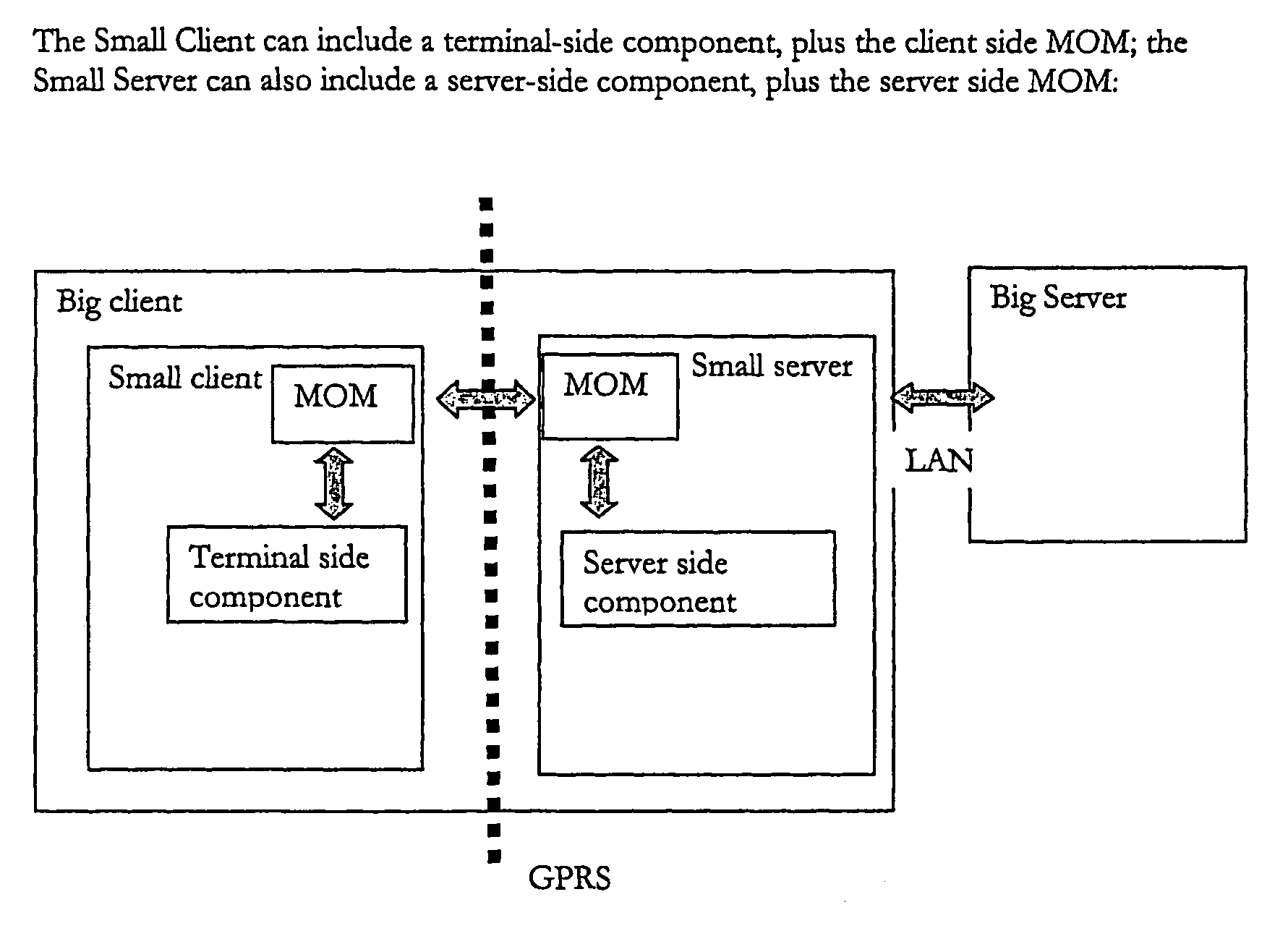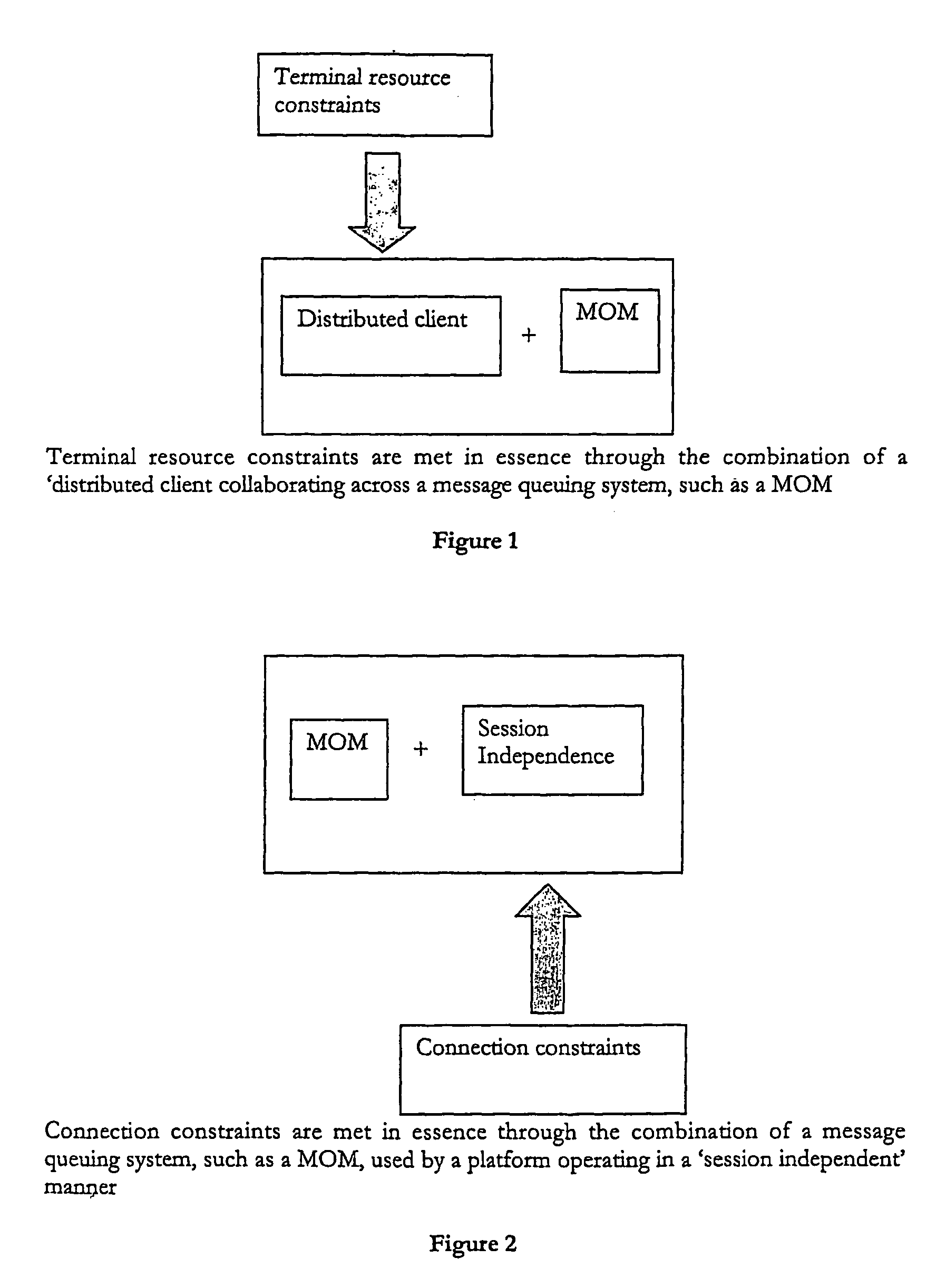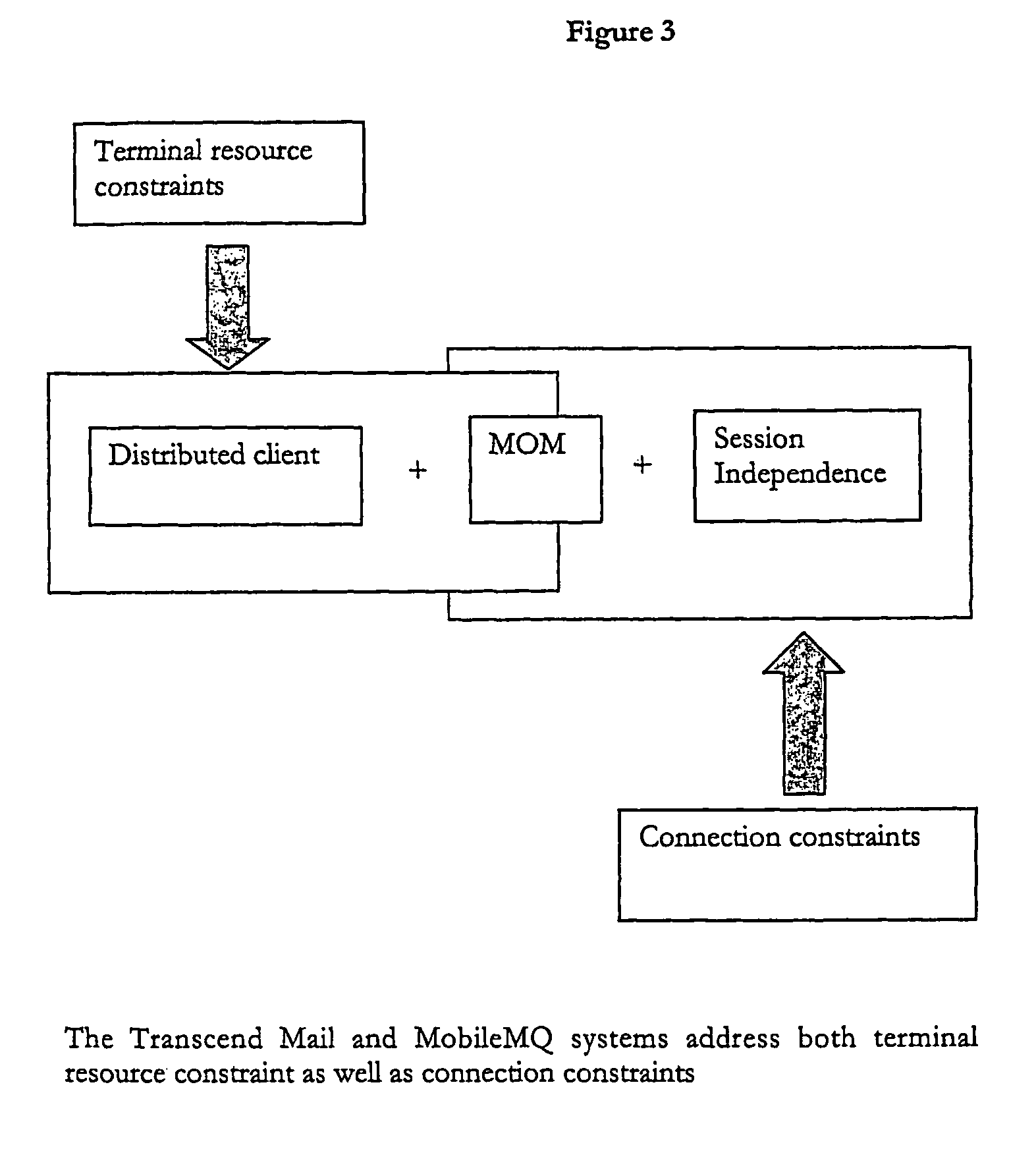Data access, replication or communication system comprising a distributed software application
a technology of distributed software and communication system, applied in the field of data access, replication or communication system comprising a distributed software application, can solve the problems of synchronisation system, large bandwidth, processing power and battery constraints of using terminals of this sort to access, replicate or communicate data, and high bandwidth, coverage and availability are high, and the bandwidth is high
- Summary
- Abstract
- Description
- Claims
- Application Information
AI Technical Summary
Benefits of technology
Problems solved by technology
Method used
Image
Examples
Embodiment Construction
1. Introduction
[0021]The present invention will be described with reference to an implementation from Visto Corporation. The implementation comprises a middleware communications platform called MobileMQ™ and a distributed application layer called Transcend Mail™.
[0022]Transcend Mail is an end-to-end GPRS-connected application that runs on (i.e. is distributed across both) a SymbianOS™ smartphone wireless terminal and a Windows 2000 server. It allows an e-mail, contacts and calendar application on a SymbianOS smartphone to use the MobileMQ platform to perform automatic data replication over GPRS with a Microsoft Exchange™ mail server. MobileMQ is a message-oriented middleware platform that is again distributed across both the smartphone and the server. It provides the GPRS-efficient, reliable and secure means of communication that enables many aspect's of Transcend Mail's user experience. MobileMQ can be used wherever there is a requirement for remote data access, replication or comm...
PUM
 Login to View More
Login to View More Abstract
Description
Claims
Application Information
 Login to View More
Login to View More - R&D
- Intellectual Property
- Life Sciences
- Materials
- Tech Scout
- Unparalleled Data Quality
- Higher Quality Content
- 60% Fewer Hallucinations
Browse by: Latest US Patents, China's latest patents, Technical Efficacy Thesaurus, Application Domain, Technology Topic, Popular Technical Reports.
© 2025 PatSnap. All rights reserved.Legal|Privacy policy|Modern Slavery Act Transparency Statement|Sitemap|About US| Contact US: help@patsnap.com



